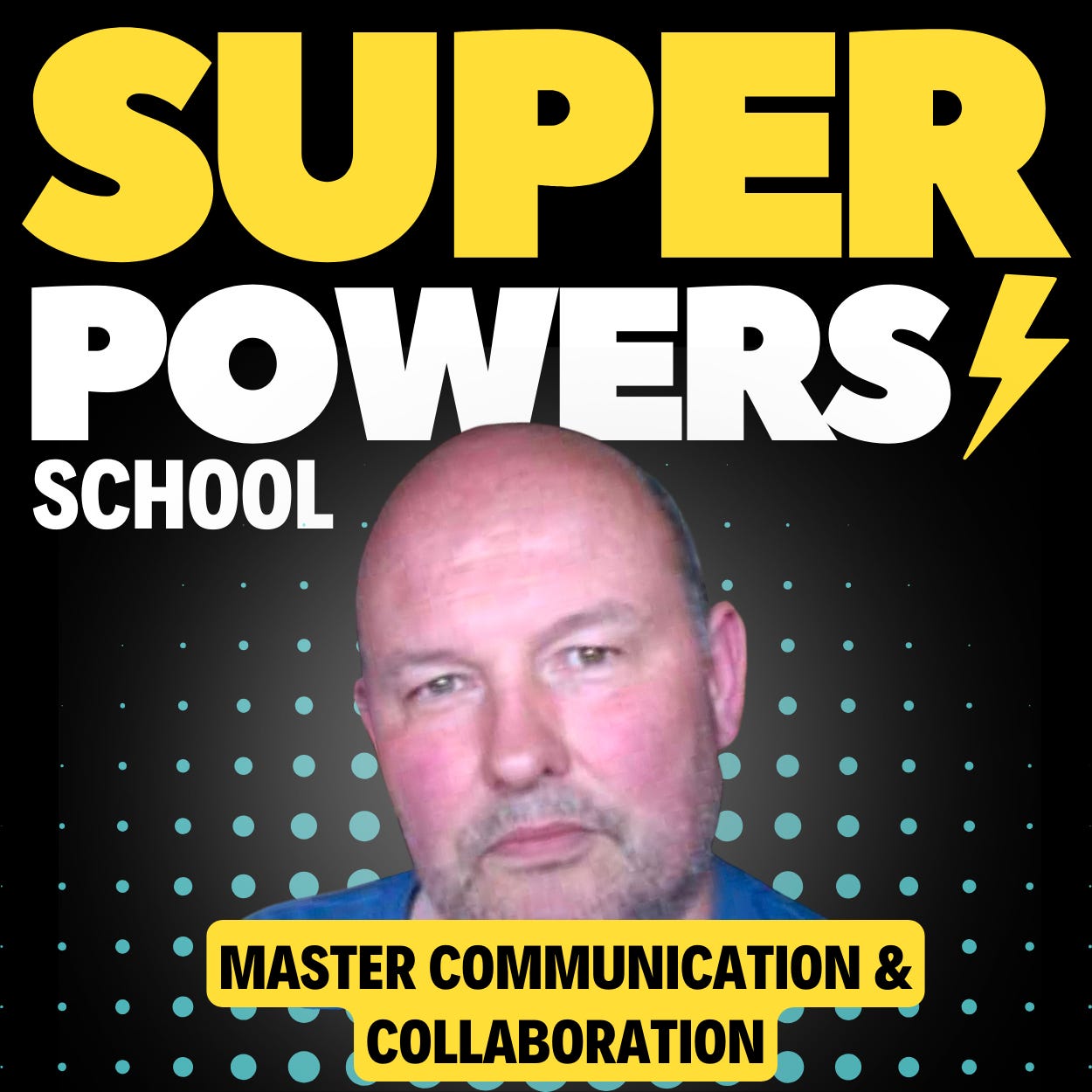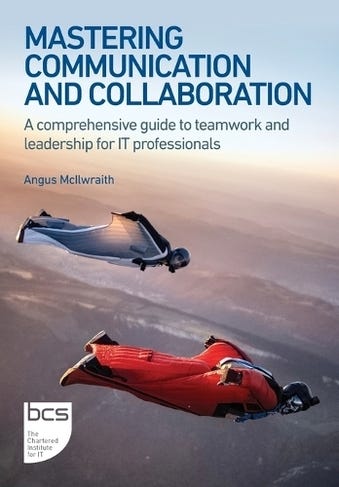How can IT professionals master communication and collaboration
In this episode, I speak to Angus McIlwraith as we explore the essential communication and collaboration skills for IT professionals. Angus emphasises 'persistent skills' over technical expertise, effective communication strategies like storytelling and active listening, and tips on improving presentations and teamwork. We also talk about Angus’s recent book titled Mastering Communication and Collaboration: A comprehensive guide to teamwork and leadership for IT Professionals.
👉🏽 Book available: Click Here
🌍 Why Most Professionals Are Expected to Understand Communication and Collaboration
Lack of Formal Training
Reflecting on the education and career progression typical of many technology professionals, there's a notable absence of structured learning focused on soft skills. As one delves deeper into their career, especially in roles demanding leadership or multidisciplinary interaction, the gap in these skills becomes glaringly apparent.
Assumed Innate Abilities
There’s a pervasive assumption that communication and collaboration skills are inherently possessed by all. This overlooks the need for deliberate learning and practice, which are essential to honing these abilities.
Focus on Technical Skills Over Soft Skills
The balance of skills training in tech-related fields skewed significantly towards technical abilities. While these are undeniably important, the lack of emphasis on soft skills can impair a professional's effectiveness in collaborative settings.
🤝 The Importance of Communication and Collaboration
Bridging the Gap Between Specialists and Non-specialists
One of the fundamental challenges in technology is the communication barrier between technical specialists and non-technical stakeholders. Clear and effective communication helps in translating complex technical details into understandable language that adds value to business discussions.
Simplifying Complex Concepts
A mark of true understanding is the ability to simplify complexity. This is crucial in tech, where advanced concepts can often become barriers to understanding and collaboration if not properly communicated.
Impact of Soft Skills on Effectiveness
Studies, such as one conducted approximately a century ago by the Carnegie Foundation, have demonstrated that a staggering 85% of what makes an engineer effective is attributable to soft skills—far outweighing technical prowess.
🗣️ Challenges in Communication
The Jargon Barrier
Technical jargon, while a convenient shorthand among specialists, often alienates or confuses those outside the immediate field. This can create barriers to understanding and collaboration, emphasizing the need for clear and jargon-free communication.
Cultural Variations in Communication
Differences in communication styles across cultures can further complicate the effective exchange of ideas. Awareness and adaptation to these differences are necessary for successful global operations.
Need for Empathy and Self-awareness
A lack of empathy and self-awareness can sever communication channels before they even fully open. Understanding and addressing the emotional and informational needs of the audience can greatly enhance communication efficacy.
🎧 The Power of Active Listening
What is Active Listening?
Active listening involves fully concentrating, understanding, responding, and then remembering what is being said. This is distinct from passive hearing, which is merely about receiving sound.
Techniques For Better Active Listening
Techniques include maintaining eye contact, nodding, and repeating back what you've heard to confirm understanding. This not only improves personal interactions but also enhances team dynamics.
Common Listening Pitfalls
Professionals often fall into the trap of waiting for their turn to speak rather than truly listening. This can lead to missed nuances and a lack of genuine engagement in conversations.
📖 The Art of Storytelling in Communication
Why Stories Work
Humans are naturally wired to respond to stories. They help us make sense of complex information, provide context, and evoke emotional connections that dry presentations lack.
Crafting Effective Stories
A good story in a business context has a clear structure—beginning, middle, and end—and includes elements that are relatable to the audience. This not only holds attention but also aids in the retention of information.
Storytelling in Action
Among the most memorable presentations are those that effectively use storytelling to weave through their narrative, making complex information digestible and engaging.
📊 Leveraging Visuals Effectively
Visuals as Punctuation
Effective use of visuals can act as punctuation in your presentation, highlighting key points and aiding in the storytelling process. This approach helps in keeping the audience engaged and making abstract concepts tangible.
Avoiding Information Overload
It's crucial to balance the amount of information presented visually. Overloading slides can overwhelm and confuse the audience, defeating the purpose of the visual aid.
Examples of Effective Visuals
Explorative visuals that compare data, such as infographics comparing the size of the Titanic to modern cruise ships, can offer stark, memorable comparisons that enhance understanding and retention.
🎭 Reading the Audience
Tailoring Communication to Audience Needs
Understanding what the audience needs from the communication at hand is crucial. This may involve adjusting the level of technical language used or the types of visuals presented.
Adapting Communication Styles
Factors such as cultural background, technical expertise, and even the general mood of the audience can dictate the communication style. Flexibility and adaptability are key.
When to Use Humour
While humour can lighten the atmosphere and make information more digestible, it’s vital to gauge its appropriateness based on audience reception and the context of the message.
🧠 Emotional Intelligence and Empathy
Recognising Emotional Cues
Effective communication requires an awareness of the emotional undercurrents in every interaction. This involves not just talking but also understanding the emotional responses that your words might provoke.
Building Emotional Intelligence
This can be enhanced through practices like mindfulness, which foster greater self-awareness and a better understanding of others' perspectives.
Case Studies in Empathy
Using empathetic communication can help in navigating difficult conversations and in fostering a more collaborative environment.
🛠️ Practical Communication Techniques
Understanding the Johari Window
This model is useful for improving self-awareness and mutual understanding within teams. It involves recognizing what is known to us about ourselves and what is known to others.
Effective Storytelling Approaches
Beyond the narrative structure, understanding your audience���s needs can guide the crafting of stories that resonate and motivate.
Mastering Visual Presentations
Avoiding common pitfalls like overcrowding slides and ensuring that visuals serve a clear purpose are critical for effective presentations.
📚 Resources and Further Reading
For those interested in delving deeper into risk perception and communication strategies, books like "Against the Gods" and Peter Sandman's works provide insightful perspectives. These resources underscore the importance of understanding various forms of intelligence and communication styles, enriching one’s toolkit for professional and personal interactions.
In conclusion, mastering communication and collaboration in a tech-driven world requires more than just understanding the language of code; it involves speaking the language of people. As technology continues to evolve, the human element remains a constant, underscoring the need for tech professionals to develop stronger interpersonal skills.
Disclaimer: The above summary has been generated with AI
Angus McIlwraith
Angus McIlwraith has almost over 30 years of experience in information risk & security. His experience includes C-level information security management, security training and education, web and digital media creation, risk management and journalism. He is a published author and has been a regular contributor to professional publications relating to security.
⚡️ In each episode, Paddy Dhanda deep dives into a new human Superpower to help you thrive in the age of AI.
🎧 Listen now on:
👉 Apple
👉 Spotify
👉 YouTube
★ BUY ME A COFFEE ★
☕️ If you enjoy the podcast, then you can donate a small amount here as a token of your appreciation and BUY PADDY A COFFEE 👉🏽 https://ko-fi.com/paddydhanda













